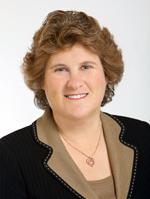By Sheryl Rowling

SAN DIEGO — Question: I’d really like to save more than I do. I’m not an oysbrenger, but unfortunately, I just don’t know where all my money goes. I can’t keep track of a budget. Do you have any suggestions for me?
A: Yes. There are a few tricks to saving money painlessly. Here are some suggestions.
Cut out “joyless” extras. Many of us spend money (fartakhleve) without even thinking about it. What’s worse is that we don’t even enjoy what we’re spending money on! For example, let’s say you go out to lunch every day. Instead of drinking water with your meal, you order iced tea. It really doesn’t add much enjoyment to your dining experience, yet you’re paying about $2 extra each day. If you go out for lunch five days a week for 50 weeks a year, you can save $500 a year just by ordering water instead of iced tea! Other ideas for cutting down on costs:
• OK, so you really enjoy your gourmet coffee each day. How about ordering a smaller size? Saving a dollar a day for a year adds up to $365!
• You ordered premium cable TV stations years ago, but now you hardly watch those channels. Consider canceling this extra monthly cost.
• You signed on with your local fitness club and pay monthly dues. Unfortunately, you never go. Maybe you should cancel the membership and take up jogging!
The key here is looking at how you spend your money and then eliminating what you really don’t need to spend.
Take advantage of bargains. There’s nothing wrong with taking advantage of metsiyes – as long as you’d be making the purchase anyway. Let’s say you have a coupon for 50% off a vacuum cleaner. If you don’t need a new vacuum cleaner, the coupon should not cause you to buy one. However, if you do need a new vacuum cleaner, the coupon will save you money! How can you easily make use of bargains?
• Buy an Entertainment® book from your local charity. Just using a few of the “2 for 1” coupons will more than pay for the book.
• Talk to your home and cell phone companies. You might qualify for a new, lower rate plan.
• Use credit cards that earn rewards such as airline miles or cash back. Credit cards should only be used if you live within your means and pay the balance in full each month.
• Consider refinancing your home mortgage or car loan. Lower interest rates might reduce your monthly payment.
It is important to set aside any savings resulting from the above suggestions. The easy way to do this is:
Pay your savings account first. Once you’ve estimated what your monthly cost savings will be, write a check to your savings account as soon as you receive each paycheck. By paying yourself first, your savings will become a priority and you won’t be tempted to spend the money inadvertently.
You can take this a step further by setting a higher savings goal. By setting aside this higher amount, your savings will certainly increase. For example, let’s say you want to save $3,000 this year and you get paid twice a month. Dividing $3,000 by 24 means that you should “pay” your savings account $125 each payday.
Contribute to your company’s 401(k) plan. Many employers will match all or a portion of what you contribute to your 401(k) plan. You should always take advantage of this free money! Let’s say that your annual wages are $40,000. Your employer’s 401(k) plan allows contributions up to 15% of your wages with 100% matching on the first 5%. In other words, if you contribute 5% of your wages, or $2,000, your employer will contribute an additional $2,000. That’s a great deal!
What’s even better about 401(k) contributions is that they’re not taxable. Based on the same facts as above, assuming you are in the 30% tax bracket, contributing 15% will cost you $4,200 ($6,000 less 30% taxes), but your 401(k) will increase by $8,000 ($6,000 plus $2,000 employer matching)! Where else can you get an immediate guaranteed return of $8,000 on an investment of $4,200?!
If you don’t have a 401(k) plan at work, consider contributing to an IRA.
*
Rowling is a certified public accountant, personal finance specialist, and principal of Rowling & Associates. She may be contacted at sheryl.rowling@sdjewishworld.com